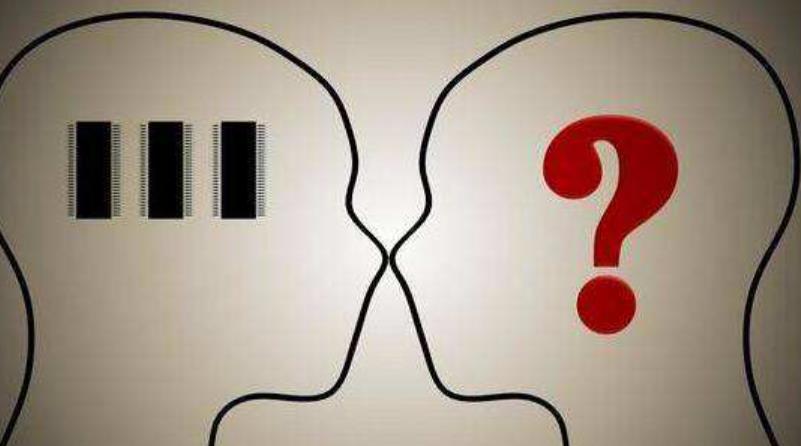|
本文是心理学专业的留学生Essay范例,题目是“Pathophysiology and Neurocognition of Bipolar Disorder(双相情感障碍的病理生理和神经认知)”,双相情感障碍是一种以反复发作的躁狂和抑郁为特征的慢性疾病。这些症状对认知有明确而明显的影响,反过来又会严重影响人际关系,但这种疾病本身很难诊断。患者经常首先在初级保健中呈现他们的症状,但症状的范围和这些症状的潜在原因的多样性导致许多患者误诊,除了双相情感障碍可以与其他精神疾病同时发生。 Bipolar disorder is a chronic condition characterized by recurrent episodes of mania and depression. These symptoms have clear and obvious impacts on cognition which in turn can severely impact relationships, yet the disorder itself is difficult to pin a diagnosis on. Patients frequently present their symptoms first to primary care, but the range of symptoms and the diversity in the potential causes for these symptoms lead to misdiagnosis in many patients in addition to bipolar disorder being able to co-occur with other psychiatric conditions. Where mania includes distractibility, inappropriate speech and behaviors, uncharacteristic goal-oriented actions, and impulsive decision making that results in negative consequences, depressive episodes demonstrate themselves in the opposite fashion. A depressive state could include difficulty making decisions, slow motor processes, cognitive changes, and alterations in memory.
Bipolar disorder can be divided into bipolar I ad bipolar II disorder. Specifically, both disorders have similar degrees of depressive episodes, but bipolar I disorder has more impairing manic episodes. Still, psychologists and psychiatrists consider both illnesses to be equally severe as both are equally likely to present suicidal thoughts or result in suicide. This drastic range of symptoms makes bipolar disorder, especially when a patient presents on one end of the spectrum more than the other is what makes accurate diagnosis difficult. Bipolar disorder is commonly misdiagnosed as major depressive disorder because manic episodes can be perceived as productive or a remissive state in comparison to depressive states or may appear less frequently to be a concern or noticeable. 双相情感障碍可分为双相I型和双相II型。具体来说,两种障碍都有相似程度的抑郁发作,但双相I型障碍有更严重的躁狂发作。然而,心理学家和精神病学家认为这两种疾病同样严重,因为这两种疾病都有可能产生自杀的想法或导致自杀。这种剧烈的症状范围使得双相情感障碍,尤其是当患者出现在谱系的一端多于另一端时,这使得准确的诊断变得困难。双相情感障碍通常被误诊为重度抑郁症,因为与抑郁状态相比,躁狂发作可以被认为是一种产生或缓解状态,或者可能不那么频繁地出现,引起关注。
Detecting alterations in the brain that accompany the multiple states of bipolar disorder could spare patients significant amounts of psychological stress. Accurate diagnostics are important to provide effective therapy and medication regimes rather than patients only receiving correct care for one portion of their diathesis.
Characterizing the profile of brain dysfunction in bipolar patients can also help improve pharmacological treatment and allow for individuals to be tested for neurochemical markers in patients at risk of having or developing bipolar disorder. Trait markers in diagnosing bipolar disorder implies that these cognitive variables may be representative of genetic factors influencing internal phenotypes where protein synthesis, transportation, and cell signaling in the brain that impacts how different structures communicate with each other. Understanding the biochemistry can also allow for better assessment of progressive changes or of need for acute intervention.
Research and investigation of the causes of the associated symptoms with bipolar disorder has been difficult, especially in evaluating its significance. Firstly, because it is a paired-state illness comprised of episodes varying in severity and symptoms. Secondly, its periods of remission in one state can be accompanied by an ongoing presence of the other state. Meaning both states can be present and functional at the same time. 研究和调查双相情感障碍相关症状的原因一直很困难,尤其是评估其重要性。首先,因为它是一种成对的疾病,由严重程度和症状不同的发作组成。其次,一种状态的缓解期可以伴随着另一种状态的持续存在。这意味着这两种状态可以同时出现并发挥作用。
This contrasts with the original concept of bipolar disorder, the Kraepelinian concept, because there is no period of recovery in between episodes. This complicates the way bipolar disorder is profiled in the medical field. Because the cognitive function is disrupted in both episodes to opposite extremes, they may be affected differently by either the same or different variables at the same or different time. This makes genetic studies drastically more complex because opposite symptoms can be caused by similar proteins or ligands but by correcting for those mutations in protein synthesis, other symptoms associated with bipolar disorder may become more severe.
By understanding these symptoms, researchers deduced that bipolar disorder, or some aspects of it, come from an abnormality in the limbic system, made up of the amygdala, the hippocampus, the hypothalamus, and other surrounding complex structures, the frontal lobe, and the basal ganglia because these structures influence the functions of bipolar disorder.
Regulation of neurocognition, such as attention, executive function, and emotional function is widely impaired in manic episodes of bipolar disorder compared to depressive episodes. Changes in attentional function were analyzed by the patient’s ability to be flexible and selective in how they process information. While both groups had a deficit compared to the control group, research showed sustained attention can be impaired more than depressive patients. 神经认知的调节,如注意力、执行功能和情绪功能,在躁郁症的躁狂发作与抑郁发作中广泛受损。注意功能的改变是通过病人处理信息的灵活和选择性的能力来分析的。虽然与对照组相比,两组人的注意力都有缺陷,但研究表明,持续的注意力可能比抑郁症患者受损更严重。
Studied with continuous cognitive performance tests, bipolar subjects tended to do worse in detecting targets and progressing in their tasks while also demonstrating the highest amounts of false alarms. This data remained consistent when manic patients were in a euthymic state. This could be attributed to impulsivity and a lack of cognitive inhibition symptomatic of mania.
Behavior and behavioral habits, such as planning, strategy, and control are enabled by executive functions and higher-level processing. The executive function of planning and strategy is a “cold” process linked to the dorsal and lateral prefrontal cortex. Processes considered “hot”, risk-reward behavior and impulse control, are regulated by the orbital prefrontal cortex, and when this region is damaged patients show uncharacteristic reward-driven and impulsive behavior.
The integrity of the frontal lobe, or lack of, could impact someone’s functional capacities and quality of life. This impaired function is consistent between manic and depressed states but is sensitive to which mood state and symptoms in presenting severity because, in remission phases, patients can still experience physical trait related symptoms while there is no evidence of neurochemical symptoms. In determining these differences between manic and depressed states, there is a significant variation in performance. 额叶的完整性或缺失,可能会影响一个人的功能能力和生活质量。这种功能受损在躁狂和抑郁状态下是一致的,但对哪种情绪状态和症状表现出严重程度很敏感,因为在缓解期,患者仍然可以经历与身体特征相关的症状,而没有神经化学症状的证据。在确定躁狂和抑郁状态之间的这些差异时,在表现上有一个显著的差异。
Depressed patients tended to text better on error margins but answered questions slower. Patients in remission states consistently scored higher. These conclusions are definitive of bipolar disorder having a state-changing profile, but because of the limited testing, it is unsure of whether hot processing impairment is unique to manic episodes.
Though neuroimaging is indirect, it is a valid measure in research that is inexpensive and readily available in a hospital setting to provide an efficient diagnosis. Current neurophysical testing measures brain activity based on neuroimaging to provide indirect measurements in how bipolar disorder impacts brain function. Determining the profile of brain dysfunction in bipolar disorder, in general, has been delayed by certain factors.
Earlier neurobiological research in bipolar disorder has consistently failed to control for substance use or affective symptoms like insomnia. They also did not differentiate between state-related differences. Relatively, the functions disrupted in different cognitive domains affected by bipolar disorder like attention, executive processing, and emotional processing are influenced by the varying states and displayed traits of bipolar disorder.
Brain imaging of structural components active in the functional markers for bipolar disorder supports studies of neurocognition in the prefrontal cortex, like those mentioned above. Classic studies performed on patients with abnormal mood and personality disturbances, like depression consequential of a stroke or tumor, reported damage to the left frontal cortex and the left basal ganglia. Other patients with damage to their basal ganglia, like Parkinson’s disease, are more prone and have more severe levels of depression compared to other patients matched for level of disability; the only difference being basal ganglia damage. 双相情感障碍的功能标记物中活跃的结构成分的脑成像支持对前额叶皮质神经认知的研究,就像上面提到的那些。对有异常情绪和人格障碍的患者进行的经典研究,如中风或肿瘤导致的抑郁,报告了左额叶皮质和左基底神经节的损伤。其他基底神经节受损的患者,比如帕金森氏症患者,比其他符合残疾水平的患者更容易抑郁,抑郁程度也更严重;唯一的区别是基底神经节受损。
Cases of mania are less common poststroke but report damage to the right areas of the same structures. This demonstrates the connectivity of the frontal cortex and basal ganglia. Therefore, the frontostriatal circuitry, which connects the two structures electrically, is thought to attribute executive and emotional functions. Structural MRIs have confirmed structural abnormalities in the prefrontal cortex of the brain in patients with bipolar disorder postmortem. In both episode states and euthymic states, euthymic meaning asymptomatic, MRI scans pick up abnormal brain function. The grey matter in the anterior subgenual portion was visibly smaller in patients who had bipolar disorder and a family history of mental illness.
Functional imaging studies in bipolar patients during manic episodes, and patients with mania, had indicated a dysfunctional orbitofrontal cortex with reduced blood flow and metabolism. These studies are important to patients with bipolar disorder, and other patients with similar affective disorders, because it means that these disorders have neurophysical cause outside of psychological triggers.
However, these studies in neuroimaging were performed while patients were at rest, so it isn’t possible to control for what the patients were thinking. For example, more activity could be related to impulsive or intrusive thoughts in manic states. In response, recent work has turned to scanning patients during tasks that require neuropsychological processes to analyze the related brain activity, like decision making. In a study performed by Dr. Judy Rubinsztein, manic patients were scanned while performing a gambling task and matched to a control task. 然而,这些神经成像研究是在患者休息时进行的,因此不可能控制患者的想法。例如,更多的活动可能与躁狂状态下的冲动或侵入性想法有关。作为回应,最近的工作已经转向在需要神经心理学过程来分析相关大脑活动(如决策)的任务中扫描患者。在Judy Rubinsztein博士进行的一项研究中,研究人员对躁狂患者在执行赌博任务时进行扫描,并将其与控制任务相匹配。
In Rubinsztein’s study, manic patients had fewer areas of their brain active during decision making, and depressive brains had less electrical activity during decision making. In a similar task manic patient matched with a healthy control group demonstrated significantly less activation of a region thought to be critical for inhibitory control, the orbitofrontal cortex, along with reduced activity in the ventrolateral prefrontal cortex.
This implicates that manic patients demonstrated less nonemotional control in their impulsivity control. They also showed increased activity in the medial orbitofrontal cortex with the presence of positive distractors, like being ignored, which is a control structure in impulsive control. This conglomerate of data indicates the pathophysiology of manic episodes in bipolar disorder is less of an inactive impulsivity control and, more accurately, a dysfunction in emotional processing.
Other studies using emotional tasks reported unusually high limbic activity in patients with bipolar disorder when asked to analyze facial expression. High limbic activity was also reported in studies where performance in a task requiring sustained attention was tested. The results of these tests suggest that patients with bipolar disorder use emotional systems when processing information that is otherwise emotionally neutral. 其他使用情绪任务的研究报告,当被要求分析面部表情时,双相情感障碍患者的边缘活动异常高。在需要持续注意力的任务中测试表现的研究中也报告了高边缘活动。这些测试的结果表明,双相情感障碍患者在处理情绪中立的信息时使用情绪系统。
These results were also significantly similar in patients who used were currently mood stabilizers at the time of testing. These highlighted similarities in subcortical activity are consistent with patients who were tested in remission, or resting phases, and therefore, can be used to differentiate patients who have bipolar disorder and major depressive disorder. Still, there is a need for further studies in comparing neural activity between bipolar states and depressive disorders.
Conglomerate evidence from this array of neurocognitive testing is indicative of neuropsychological and neurochemical impairment in patients with bipolar disorder. Complimentary studies in brain imaging reliably demonstrate that cognitive deficits may be attributed to pathophysiology in neural networks between the frontal lobe and subcortical limbic regions, yet the challenge remains in identifying objective markers making definite diagnosis elusive
Promising findings have determined neuroimaging measures that aid in differentiating between bipolar and unipolar disorders as well as identifying neural circuit patterns that can potentially classify the severity of a patient’s bipolar disorder. Genetic research is imperative in moving forward in identifying and treating bipolar disorder because it ultimately has the most potential in making uniquely target treatments feasible for all affective disorders. 有希望的发现已经确定了神经成像措施,以帮助区分双相和单相障碍,以及识别神经回路模式,可以潜在地分类患者双相障碍的严重程度。基因研究在识别和治疗双相情感障碍方面是至关重要的,因为它最终最有可能使所有情感障碍的独特目标治疗成为可能。
留学生专业相关专业范文素材资料,尽在本网,可以随时查阅参考。本站也提供多国留学生课程作业写作指导服务,如有需要可咨询本平台。 |
 |
|||
| 网站地图 |



